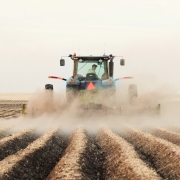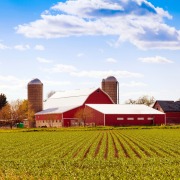New Farmers Guide to Starting a Farm in Virginia
If you’ve been considering starting a hobby farm or a small farm for profit, you’re one of thousands of Americans of all ages who have recently delved into the field. To continue to encourage the growth of new farms, even the USDA has put money on the line, “nearly [tripling] funding for the only two programs specifically designed to support beginning and socially disadvantaged farmers,” according to The Atlantic. Running a small farm can be a rewarding hobby as well as a profitable business or side-hustle, but because of the nature of farming—startup costs are high and success often relies on experience—it’s not easy to dive right in. While deals can still be found, finding the right land to purchase or rent at the right price can be daunting, and equipment costs can quickly add up for even the smallest operations. Careful consideration and planning, and in many cases financing, are necessary to get hobby farms and farm businesses of all sizes off the ground and financially sustainable.

Farming is the biggest private industry in Virginia, with almost 46,000 farms across the state. The vast majority of these farms, however, can be considered hobby farms, providing only a portion of the owners’ annual income. Is it worth it to start a farm, even if it may not be your only mode of income? An article from the University of Virginia addresses that question, arguing that farming can be “personally rewarding” whether you do it as a hobby or a way to make a living. Whatever type of operation you have, such as raising a few beef cattle or starting a broiler operation, farming can provide additional income, help subsidize the cost of your property, or even provide a living.
That’s not to say that a farm can’t support a family or individual. In fact, there are many government programs designed to help get new farms up and running, with tax-breaks, financial incentives, grants, and loans. Over the years, the push to promote access to healthy food, including vegetable and organic food production, has created numerous programs to assist, educate, and fund small farms—and many of these programs can be taken advantage of by both full and part-time farmers. However, having a good idea of what you want out of your farm, whether it be side-income or a full-time endeavor, is important to the ongoing success of your establishment.
Things to Consider When Developing Your Farm Goals
Before pouncing on a newly-listed farmette or moving back to the family farmstead, it’s important to consider some personal and practical questions about your goals as a farmer. These questions will help you refine your ideas and expectations, and ultimately allow you to create a viable business plan to allow your farm to flourish, as well as to present to family members, lenders, and other funding opportunities. Although there are many things to consider before jumping into starting a farm, there are three major questions you should ask yourself as you begin exploring the possibilities:
- What do I want to put into my farm and what do I hope to get out of it?
- What do I want to grow or raise on my farm?
- And, how will I pay for it?
What do I want to put into my farm and what do I hope to get out of it?
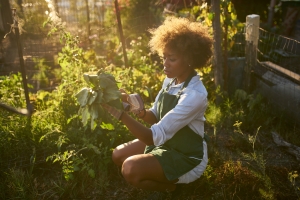 The first part of this question may require some soul-searching. Farming can be hard work, and even hobby farms require a lot of it. Consider how much time you are willing to devote to your farm — both on a day-to-day basis and seasonally. If you are recently retired and look forward to long winters in Florida, livestock like dairy cows that require a year-round commitment may not be the best bet. On the other hand, if you currently work as a teacher, growing vegetables seasonally might be a great side-income that takes advantage of extra free time in the summer. And if you’re ready to jump in and do the work of a full-time farmer, then it’s good to know what it takes to make a farm business successful and see if you’re up for the challenge.
The first part of this question may require some soul-searching. Farming can be hard work, and even hobby farms require a lot of it. Consider how much time you are willing to devote to your farm — both on a day-to-day basis and seasonally. If you are recently retired and look forward to long winters in Florida, livestock like dairy cows that require a year-round commitment may not be the best bet. On the other hand, if you currently work as a teacher, growing vegetables seasonally might be a great side-income that takes advantage of extra free time in the summer. And if you’re ready to jump in and do the work of a full-time farmer, then it’s good to know what it takes to make a farm business successful and see if you’re up for the challenge.
When you consider the second part of this question—what you hope to get out of your farm — that doesn’t mean figuring out what your farm will produce. Rather, think about the benefits you hope to reap from your endeavors. The answer can be financial in nature—how much money do I want/need to make?—but it doesn’t have to be. What is your vision for life on the farm? What sort of experience or psychological reward do you hope to take away from it? At the end of the day, season, or year, what impact has farming had on your life?
The Good Heart Life recommends creating a holistic goal, which is different than a business plan, that includes three items: “Quality of Life Statements,” or how you want your daily life to be, “Behaviors and Systems,” or the things you will do and practices you will maintain to support that quality of life, and your “Vision,” or the ultimate impact your farm will have on you and your community, reflecting your core values and mission for the farm. Often times it is this holistical goal, rather than a financial one, that drives our desires to venture into the world of small farming, so it’s important to understand what we hope to gain from our hard work, before getting into the specific details.
Once you have a firmer understanding of how you want your farm to fit into your life and what you hope to achieve with your farm, only then is it time to determine what the farm that fulfills your goals will look like.
Choosing the Right Size Business for You
When talking about farm sizes, the first thing that will probably come to mind is acreage, but size isn’t the only thing that matters. Some lucrative and labor-intensive crops can happen on a very small scale, and some large-scale ventures can end up turning very little profit or even lose money in a bad year. Hops, the perennial vine whose flowers give definition to beer, is a great example: one acre can yield $25,000 or more, but requires significant infrastructure and hands-on hours during harvest. Successful small vegetable and fruit operations can also happen on smaller farms of a few acres or less. However, cattle will need room to roam and commodity crops like wheat and soy not only require substantial acreage but also expensive planting, weed management, and harvesting equipment. So when thinking about size, don’t just think about the size of the farm, but the size of the business as well. Will it be run in your spare time, full-time with no help, or will you hire staff or seasonal workers? How big do you want your business to be?

Your financial status will likely come into play here, whether this endeavor will be self-financed, or if you will need to pursue financing options in order to make your dream a reality. While income from hobby farms may be useful to supplement land costs, most viable farm businesses rely on financing either to make the initial land purchase, to buy large equipment, or annually to make large regular purchases from livestock to seed. Financing also may be necessary to grow your farm to the size that it actually turns a profit. Rather than start very small and hope the minimal profits will enable you to continue to grow, creating a solid business plan and financing a larger but still manageable operation may allow you to generate a profit faster and be the difference between your farm being a financial liability and a viable business.
Choosing the Focus: What do I want to grow or raise on my farm?
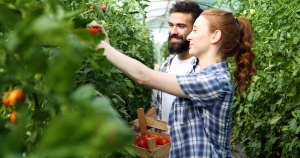 Hobby farms and small farm businesses can pursue one specific focus, like goats or cut flowers, or something more in line with our traditional vision of the farm life: a small orchard, chickens running in the yard, and rows of vegetable beds. Many hobby farms end up growing into a small business, as the farmer hones in on specific areas of focus, professionalizing and making them profitable.
Hobby farms and small farm businesses can pursue one specific focus, like goats or cut flowers, or something more in line with our traditional vision of the farm life: a small orchard, chickens running in the yard, and rows of vegetable beds. Many hobby farms end up growing into a small business, as the farmer hones in on specific areas of focus, professionalizing and making them profitable.
Although choosing a focus should come second to determining what size of operation you want to run, chances are you already have an idea of what you are interested in growing on your farm, and oftentimes your area of focus will dictate the size of your business or land and your seasonal workload. It’s good to consider these things—your desired business size and your area(s) of focus—simultaneously. You may even go back and forth or change your thoughts on one or the other as your ideas start to take shape. That’s all part of the process of making the best decision for you. Let’s take a look at some common focuses for small farms, some innovative revenue streams, and important things to consider as your ideas for your farm start to come to life.
The Beloved Market Farm:
With increasing consumer interest in purchasing local, seasonal food, as well as ever-expanded funding opportunities fueled by this interest, vegetable farming is rightly on the top of many new-farmers’ lists. And it’s hard to imagine an idyllic farmstead without a seasonal vegetable garden, lush and fruitful, tucked behind a white-picket fence. Growing vegetables has a place on nearly any small to mid-sized farm, whether it’s a kitchen garden for personal use, a market garden for selling at local farmers’ markets and roadside stands, or larger-scale, multi-acre vegetable production for local markets, including restaurants and stores. Most small vegetable farms are diverse, which means they do not specialize in only a few crops, but grow a wide variety of vegetables spanning the entire growing season. What you choose to grow will be in part determined by your own palate, but also by a number of other conditions, including the size and quality of available land, climate, and local demand.
Consider Land Needs
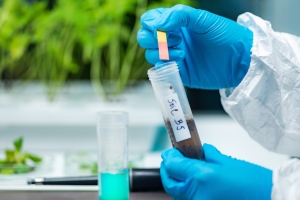
Your business or personal plans will largely dictate what size your production will be, but the area of quality tillable land available to you will also impact not only the size but also what can be grown. Certain crops (like pumpkins and corn), can be space hogs for the entire growing season, while other crops can be quite productive in a small space, or can be part of a plan for succession planting, where one piece of land can produce more than one harvest (lettuce and greens are one of the most common examples of this). And almost all vegetable varieties need well-drained, fertile soil to thrive.
Smaller gardens in places with poor soil conditions can be constructed out of raised beds, composting and fertilizing, double-digging to loosen soil and bring nutrients to the surface, and terracing to prevent washed-out beds. But to bring poor, compacted, or wet soil to good, usable condition on more than half an acre of land can be daunting if not impossible. If you already have land you plan to use, consider whether or not it will be ideal for vegetable production and at what scale. If you are still looking for property, keep your production goals in mind as you scout out locations. Conducting soil tests prior to purchase or planting is important to avoid heartache and financial hardship down the road.
Lastly, don’t forget to ensure that you have a quality water source easily accessible to your planting beds, or that it will be affordable to bring one in. And if the conditions on your current property are just not right for vegetables, don’t despair — there are lots of other things to grow or uses for land that don’t have such high standards.
Growing for the Right Climate (and Beating Mother Nature)

Beyond soil and land quality, you’ll need to consider the ins and outs of the climate of your region when determining what can be grown and at what scale. Unless you are specializing in only a few crops, the large variety most vegetable gardens contain further complicates the picture, which means effective space planning and planting scheduling are paramount to success.
The growing seasons in Virginia vary dramatically across the state, with last frost dates ranging from early April in Norfolk to early June in parts of the Blue Ridge Mountain region. Because of the range of climates all within the boundaries of one state, it’s important to be familiar with your own microclimate, which can be different from neighbor-to-neighbor or even from one side of your property to the other in mountainous areas. Additionally, the amount of rainfall, humidity, and high temperatures will affect not only what you can grow, but what will thrive in your region. Peppers and eggplant will explode given the proper heat, while kale will bolt and become bitter by May under the same sun.
While some plants must be direct-seeded, to get a proper harvest of market-stand favorites like tomatoes and peppers, you’ll need to plan seed in late winter or early spring and transplant once the danger of frost has passed and the soil has warmed to the proper temperature. Planting early, even when not necessary, can also extend the growing (and harvesting!) season, and give you a jump on the local competition. So, despite being a Southern state, consider access to greenhouse space or the purchase of transplants a necessity for most areas of Virginia. Additionally, high tunnels, which are unheated, temporary greenhouse structures, provide a cost-effective way to extend the growing season several weeks on either end, and may be a simple alternative or additional means of increasing your production. The benefit of extending the growing season is that it not only produces more food on the same land, but it also spreads out your income and workload, while making the most of whatever space you have available.
In addition to weather, there are other aspects of mother nature that can have an impact on your crop production: Animals. For example, the average deer will eat up to seven pounds of food a day, which can amount to a lot of lost tomatoes. When growing in remote places with heavy animal populations, keep in mind that you might need to set up some kind of fencing or other deterrent to stave off the local critters.
Marketing Your Produce
Lastly, if you’re looking to market your vegetables, you’ll need to consider local demand and pre-existing competition. Scout out local farmers’ markets to gauge their size and ability to absorb another stand. Also, consider what is not already represented and see if your farm could fill in any gaps: is there a lack of organic produce, greens, or more exotic vegetables, for instance? Is there a local CSA (Community Supported Agriculture) share already in the area? Is your farm or potential farm on a busy road that could support a roadside stand or onsite store? You can also approach nearby restaurants to see if they would be interested in sourcing fresh, local, seasonal produce. But don’t despair if you find yourself unable to sell everything you grow locally. Driving a few hours to sell to larger markets, especially those in NoVa, can be especially lucrative. The Washingtonian recently published this helpful map and guide to dozens of DC-area farmers’ markets.
Additional and Alternative Income Streams for the Small Farm
Keeping Bees for Honey
Despite the threat of Colony Collapse Disorder (sudden loss of whole colonies) as well as the general decline in wild bee populations due to rising disease in the US, beekeeping is still a popular farming venture, and with an array of value-added products like flavored honeys and candles, there are many possible streams of revenue.

Beekeeping requires a lot of supplies upfront, from hives to protective gear to collection and storage equipment, not to mention the actual bees! Beekeeping can be started on a personal scale for as little as $500, though mid-size operations can cost thousands to get up and running. On a small scale, beekeeping is a part-time, somewhat seasonal hobby, with the most labor involved in setup (spring) and maintenance and honey collection (summer). As with all farming practices, seasonal changes play a big role in how you will start and tend your hives. Hives should be set up in the spring months in temperate climates like Virginia, so be ready to pre-order your colony and equipment in the winter in preparation. If you miss the window this year, you’ll have to wait till the following to order your bees to ensure that they will be well-fed and healthy enough to survive their first winter in their new home. A great resource for Virginia beekeepers is Virginia State Beekeepers Association, which not only provides in-depth information and classes about keeping bees, but also connections to local groups.
One thing to keep in mind before starting the time-consuming endeavor is to consider if your location is suitable for keeping bees, as well as choosing the right spot to start hives on your farm. If your hives will be located near a conventional farm, the threat of pesticides, such as neonicotinoids, is very real. Pesticide exposure is considered to be one of the causes behind Colony Collapse Disorder, and have caused the die-offs of small and major commercial colonies alike. Farms are required by law to notify beekeepers before pesticide applications (if requested), and to be upfront with information concerning their use of pesticides, so don’t be afraid to politely ask your neighbors in advance! Another thing to consider if you are near conventional farms is whether your bees will have the proper nutrition, which can contribute to their overall resilience to disease. According to planetbee.org, monoculture farming also makes it more challenging for the bees to forage a well-balanced diet,” so bees kept near these farms will need to have additional food sources. The upside to this is that a great partner for beekeeping is another great small-farm venture: cut flowers.
Cut Flowers and Herbs
Cut flowers can bring in up to $30,000 per acre, according to profitableplants.com, so making even a little room for them on your farm makes good financial sense. In addition to being one of the most highly-profitable forms of agriculture per acre, cut flowers (and herbs!) can be a great additional stream of income for not only beekeepers, but vegetable farmers as well, as most of the basic tools for for planting, transplanting, and harvesting can be used for both. Additionally, farms with lots of flowers bring native pollinators in to help your garden produce bountiful fruit, a much-needed boost in these days of declining beneficial insect populations. The more beneficial insects you have, the better the ecological balance your garden will have, leaving it less susceptible to infestations of harmful pests. Lastly, many flowers and herbs (like marigolds, cilantro, and mint) actually ward off the bad bugs. And if those arguments weren’t convincing enough, even a few specially-placed cut flower bouquets or luscious bunches of herbs will attract buyers to your market stand and add beauty and variety to your CSA.

Cut flowers and herbs can be grown in the perimeter of existing vegetable beds as a side-stream of revenue, or on their own designated fields. As with vegetables, growing flowers strongly benefits from, and almost requires, access to greenhouse space to start transplants in mid to late winter, in order to expand varieties for sale, as well as get a jump start on the growing season. Depending on the size of the operation, you may also be able to purchase seedling transplants from local growers or wholesale, though you may sacrifice choice and it could, of course, cost significantly more per plant, hollowing out profit margins. Also be aware that commercially-grown transplants may be treated with chemicals that can deter beneficial insects or even harm your bee colonies, so also be sure to ask before purchase.
Animal Agriculture
So far we’ve focused on things that you plant and harvest, but also consider what you can raise, and how animals might fit into the picture. Adding a few animals to your farm, like goats or chickens, might bring in additional streams of revenue as well as valuable manure compost for your garden. And it’s hard to picture Virginia farmland without the rolling hills capped by miles of white equine fencing, In fact, you might want to just skip the crops altogether and devote your acreage to the animals.
Chickens, Ducks, and Geese: More than just eggs
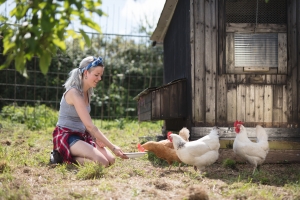 As Virginia Estates points out, “With the rising cost of eggs in today’s market and the dangers of pesticides coming to light, raising chickens can be the perfect solution if you have a bit of land.” Although keeping fowl seems like a surefire way to add to the authenticity of your farm, chickens, ducks, and geese offer a lot more benefit than you might initially think. Chicken manure is exceptionally high in nitrogen and makes great fertilizer for your vegetable beds. Chickens and ducks make for excellent insect control, devouring slugs, grubs, and other pests that can wreak havoc on gardens. Geese, on the other hand, are primarily herbivores, but that doesn’t mean they don’t have their place. Metzer Farms, one of the largest waterfowl hatcheries in the country, details how useful these birds can be: “Weeder geese have been used for years to control unwanted vegetation in commercial crops, waterways and lawns [and] have strong food preferences with grasses being at the top of the list and most broad-leafed plants being disliked or unpalatable.” And of course, let’s not forget the eggs. Free range chicken eggs are in high demand and can bring $5/dozen or more in the right market. Goose and duck eggs can also fetch a good price in specialty markets, sometimes up to $5 an egg!
As Virginia Estates points out, “With the rising cost of eggs in today’s market and the dangers of pesticides coming to light, raising chickens can be the perfect solution if you have a bit of land.” Although keeping fowl seems like a surefire way to add to the authenticity of your farm, chickens, ducks, and geese offer a lot more benefit than you might initially think. Chicken manure is exceptionally high in nitrogen and makes great fertilizer for your vegetable beds. Chickens and ducks make for excellent insect control, devouring slugs, grubs, and other pests that can wreak havoc on gardens. Geese, on the other hand, are primarily herbivores, but that doesn’t mean they don’t have their place. Metzer Farms, one of the largest waterfowl hatcheries in the country, details how useful these birds can be: “Weeder geese have been used for years to control unwanted vegetation in commercial crops, waterways and lawns [and] have strong food preferences with grasses being at the top of the list and most broad-leafed plants being disliked or unpalatable.” And of course, let’s not forget the eggs. Free range chicken eggs are in high demand and can bring $5/dozen or more in the right market. Goose and duck eggs can also fetch a good price in specialty markets, sometimes up to $5 an egg!
Larger Animals: Goats, Llamas, Alpacas, Sheep, Horses
If you don’t have a green thumb, but have space to spare, consider basing your enterprise on animals instead of plants. Because each animal eats about 3 pounds of food per 100 pounds of animal per day, and grazing too much on the same space can also lead to erosion as well as parasitic infestations in the soil that are difficult to defeat, you’ll ideally allot about 2 acres per animal for larger grazing animals. However, although access to water is imperative, the quality of land doesn’t necessarily have to meet the high standards of vegetable production, providing additional opportunities for those with lots of land but less-than-ideal growing conditions. Although we typically think of cattle or pig farms and dairy operations when we thinking of raising larger animals, here are a few additional “outside of the box,” ventures to consider for small farms.
Goat milk and products made from goat milk are still trending after years of popularity. According to Farm & Ranch Freedom Alliance, raw goat’s milk can bring in the highest price of all dairy, selling for up to $14.50 per gallon. Additional items like goat cheese and yogurt can further increase profits and use up any milk not immediately sold, decreasing waste as well. Keep in mind, though, that goats need to be milked up to twice a day at peak lactation, and bred often (every 1-2 years) to keep the milk supply up. In other words, there’s a substantial and daily time commitment required for running a goat (or any!) dairy production.

Llamas, alpacas, and sheep are kept for their wool and are relatively low maintenance on the day-to-day basis (more time is required for shearing), so may be good choices for those who would like to keep animals, but don’t want to spend hours milking and processing milk each day. Alpaca and llama wool can fetch a premium, but these animals will generally produce less wool and require more food than a sheep. Unless you have a large operation, your best bet will be to sell to local markets and crafters. Learning to spin and dye wool will add value to your product and expand your market to individuals who want to buy something ready to use, and this processing can be done at any time, for added flexibility. These animals are herd animals, so you’ll need to buy more than one. And costs can add up quickly for the initial animal purchase. As Andrew Amelinckx writes for Modern Farmer, “A nonbreeding male with decent fiber runs $500 to $1,000. Females who produce both fiber and offspring typically start at $3,000 and can go up to $30,000 or more, while show-worthy herd sires still fetch as much as $60,000.”
Lastly, especially in Virginia, another popular revenue stream for your small farm with room to spare can be animal boarding — particularly horses. Horse boarding requires significant infrastructure, including stables and large fenced pastures (at least 1 acre per horse). Home Advisor offers an informative break down of types of fencing and average costs, but in general, expect to pay at least a few thousand dollars for a small pasture. If you plan on just having a few horses for personal use, you can get away with a smaller and more affordable, no-frills shelter, however, if you are boarding horses for income your customers will expect much more, including access to equipment and gear, professional care-taking, and fully-enclosed and secure stables, which could add significant cost to your farm purchase if those facilities aren’t already on the premises. The Horse offers an excellent guide to building a horse farm from scratch, including hiring an architect or designer, site-planning, and managing manure.
Financing Your Dream: How will I pay for it?
Once you determine what your farm will look like, you’ll need to create a plan to achieve your vision in practical terms. The last question, and in many cases the most important, involves considering how you will finance your farm purchases — the farm itself, the equipment, infrastructure, seed/transplants, animals, workers, maintenance, utilities, taxes, and other yearly expenditures.
Creating an Effective Farm Business Plan
Almost all successful businesses depend on thorough planning, and this is especially true for those, like small farms, that have large initial and ongoing costs. Before you attempt to purchase your farm, taking the time to make an effective business plan will help you create a concrete strategy for proceeding, as well as open up many funding opportunities from places like local and national associations, state and federal programs, and conventional banks, who will expect you to have a clear vision (in writing!) before considering helping to finance your endeavor. There are literally hundreds of resources for creating a feasible small-farm business plan out there, but below you will find a round-up of five exceptionally useful business planning tools and services:
- VA FAIRS (Virginia Foundation for Agriculture, Innovation, and Rural Sustainability) is a full-service nonprofit helping individuals start small farms in Virginia. VA FAIRS specializes in “strategic planning, grant assistance, feasibility study, and business plan creation, and cooperative assistance for rural agricultural enterprises,” assisting over 100 producers in the past three years.
- AgPlan is a free website designed to help small farms develop their own business plans. AgPlan provides “customized assistance to different types of rural businesses” with “outline[s] designed specifically for that particular type of business, tips or questions that help you develop each section of the plan, sample business plans, and links to additional resources for each section of the plan.”
- If you’re looking to learn how to start a farm in Virginia or transition your own conventional farm to other forms of agriculture, Piedmont Environmental Council offers significant conservation-focused educational opportunities, including online resources as well as the “Small Farm Dream Course.” The course provides support to “beginning and transitional farmers considering starting an agricultural operation,” and is designed for those who are “considering launching a small farm enterprise, but are not sure where to start.”
- The Virginia SBDC provides counseling and education for small businesses of all kinds. In addition to online planning tools and resources, a wide array of classes are offered online on-demand as well as in person in small group sessions throughout Virginia.
- Although not a local resource, the Minnesota Institute for Sustainable Agriculture (MISA) has published an extremely useful free publication, “Building a Sustainable Business, A Guide to Developing a Business Plan for Farms and Rural Businesses.” Designed “to address the evolving business planning needs of beginning and experienced rural entrepreneurs,” the guide includes five designated tasks that guide you from identifying your values to creating and implementing a business plan.
Virginia Beginning Farmer Resources:
- Virginia Cooperative Extension
- Virginia Beginning Farmer and Rancher Coalition Program
- VA Farm Link
- Virginia Department of Agriculture and Consumer Services
Additional Beginning Farmer Resources:
- USDA New Farmers Resources
- Leopold Center: A Resource Guide for Beginning Farmers
- ATTRA Resources for Beginning Farmers
- Beginningfarmers.org: Starting a Farm

Federal Loans and Grants
Before we jump into the world of US Federal Funding, prepare yourself for a whole lot of acronyms, the most important of which is USDA. The USDA is the largest agricultural organization in the world, and although most of the funding is provided for large-scale conventional farms, there are a lot of opportunities for small, new farms as well. The 2018 USDA Farm Bill formed the FOTO program (Farming Opportunity Training and Outreach) which will receive $435 million in funding over the next 10 years to help new and underrepresented farmers get started in the field. Their website is a great resource for links to numerous programs through the USDA, though there are so many, it can be difficult to wade through. The USDA provides significant federal funding opportunities through a variety of programs, notably through the Farm Service Agency (FSA). The FSA offers many different kinds of loans suitable for beginning and small farmers, including general farm loans and loans for targeted audiences. A complete guide to FSA Farm Loans can be found in their online guide, but below you’ll find a broad overview of the many options.
General FSA Farm Loans
The FSA operates a number of loans for farm purchase, as well as general purchases and operating costs These include Direct Operating Loans for things like “livestock and feed; farm equipment; fuel, farm chemicals, insurance, and family living expenses” as well as “minor improvements or repairs to buildings and fencing; and general farm operating expenses,” as well as Microloans designed especially for small and beginning farmers, especially those with “specialty crop and niche type operations.” Direct Farm Ownership Loans can be used to purchase property or build your facilities, as well as for “soil and water conservation and protection purposes.” And lastly and most common, Guaranteed Loans are designed to finance farmers who may not qualify for a conventional commercial loan. You can apply for these loans directly at your local lender, including F & M Bank.
Loans for Targeted Audiences
There are also many FSA loan programs designed to help nontraditional and small farmers get their foot in the door. These include Youth Loans for young people to “to finance educational, income-producing, agriculture-related projects,” loans for Minority and Women Farmers and Ranchers designed to “support the full participation of minority and women family farmers in FSA’s farm loan programs,” and loans for Beginning Farmers and Ranchers, which can finance farmers who have been operating for less than 10 years.
USDA Grants
In addition to borrowing money through their loan programs, the USDA also offers numerous grants special for small local farmers of healthful goods, including grants for specialty crops, value-added products, promoting the consumption of local food and farmers’ markets. They even have a grant program for improving the energy efficiency of your operation (REAP).
Part of the giant USDA umbrella are two other note-worthy organizations: National Resources Conservation Service (NRCS) and National Institute of Food and Agriculture (NIFA), which provides grants through Sustainable Agriculture Research and Education (SARE).
The NRCS provides financial and technical assistance through the following programs:
- Agricultural Management Assistance (AMA): Can be used to build or improve irrigation systems
- Conservation Stewardship Program (CSP): Can be used to improve the quality of resources condition like energy, water, soil, and habitat
- Environmental Quality Incentives Program (EQIP): Can be use for “conservation practices, or activities, such as conservation planning, that address natural resource concerns on their land.” Additionally, the competitive Conservation Innovation Grant (CIG) is awarded for projects that “stimulate the development and adoption of innovative approaches and technologies for conservation on agricultural lands.”
SARE has funded over 6,700 grants for farms and educators looking to promote their mission: “to advance—to the whole of American agriculture—innovations that improve profitability, stewardship and quality of life by investing in groundbreaking research and education.” SARE is divided into four regions, Virginia falling under Southern SARE, which has granted over $5 Million in funding in Virginia alone. For small farmers, SARE offers “On-Farm Research Grants” and “Producer Grants,” which fund of up to $15,000, to “test on-farm or marketing ideas or solutions to existing farm problems…” A recent local example of a SARE grant project was testing production methods for growing baby ginger over winter: “the project built a house-within-a-house protecting the mature plants even at Blue Ridge winter temperatures to explore seed production possibilities.”
State Funding and Local Resources

If you are feeling overwhelmed by the size and number of federal programs, keep in mind that there are numerous state and local programs available to Virginians, both to help you apply to federal programs and to help finance your undertaking on a more local and personal level. Here are a few to get you started:
VA FAIRS: As part of its goal of helping small farmers get started, VA FAIRS offers assistance in applying for federal grants, particularly the USDA’s Value Added Producer Grant (VAPG), with awards of up to $250,000 for operations including “fresh produce, wine, beer, spirits, dairy, fish, forestry, livestock, meat processing, and more.”
The Virginia Cooperative Extension also provides assistance in applying for USDA loans including REAP, VAPG, and Rural Business Enterprise Grant (RBEG) program. Additional
Shenandoah Community Capital Fund: SCCF offers microlending to the Shenandoah Valley with loans ranging from $1,000 to $50,000 paid back over 1-6 years. There is special consideration for businesses which are “socially equitable” and “environmentally sound.” SCCF serves the counties of Augusta, Rockingham, Rockbridge, Highland, Bath, Albemarle, and Nelson, and the cities of Staunton, Waynesboro, Harrisonburg and Lexington.
In an effort to promote access to healthy food, the Virginia Community Capital offers an array of loans for borrowers including “food hub operators, retail and wholesale distributors, value-added processors and producers, and food business incubators.” Loans can be used for both acquiring real estate and improving and expanding small businesses.
Conventional Financing: The Benefits of Working with a Local Bank
Although there are numerous government and private programs out there to help you finance or fund your dream, it is likely that you will also rely on conventional financing from a local bank as well, either to fill in the gaps in funding or make large purchases (including the initial land purchase!) that do not qualify for other forms of assistance. When choosing a financial institution, finding a reliable, knowledgeable, and local option will provide you with the peace of mind that you will always have someone available and on your side as you wade into the complicated business of starting and funding a small farm.
F&M has been serving area farmers since it was incorporated by farmers and local businesses in 1908, and provides an array of financial services to help finance your farm and manage your business finances, including mortgages, home equity, and construction loans to fund the initial property purchase and/or improvements of a small farm, as well as agricultural financing (including USDA Guaranteed Loans) for real estate, cattle, dairy, and poultry farm operations and business checking and savings accounts, credit cards, and cash management.

